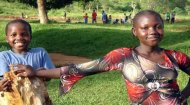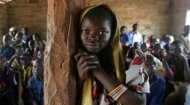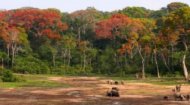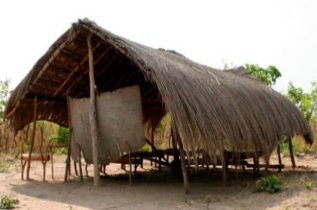|
|
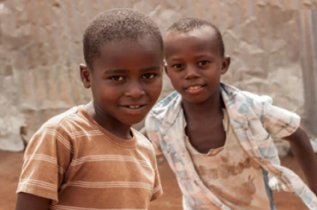
|
Children in CAR |
Children in CAR |
Children in CAR | Children in CAR |
For information, videos and photos of
the Central African Republic check out our CAR profile pages.
More >
|

|
As such, during the May to October rainy season, schooling can be severely disrupted. In the north of the country, facilities are often referred to as 'bush schools' with furniture made from tree trunks and no or few educational materials with up to five children sharing a makeshift desk. These are effectively 'pop-up' schools (below) which can be quickly fled if armed rebels groups start opertaing in the area so children are not trapped inside and there is little to destroy. Primary education itself is split in two; Primary One and Primary two with Primary One beginning at six years old and lasting for five years with students who pass their exams being promoted to Primary Two (Middle Education sometimes called Lower secondary) around the age of 11 which continues for a further four years. Students who fail to progress to Primary Two can instead undertake vocational training which is highly practical, focussing on teaching how to grow their own food and sell any surlus or helping children caught up in the conflict readjust to 'normal' life. Students who satisfactorily complete both primary levels are eligible for secondary education that lasts for three years until about the age of 18 with students opting for either technical or academic streams. The former offers training for various trades for which proficiency certificates are awarded whilst the academic stream offers the school secondary baccalaureate which can be used as an entry to university. That is the plan. The reality is less impressive, especially for girls, with only 65% of them starting their primary eduaction and just 23% completing the full period as ever because work and domestic chores are considered more important and parents prefer their older girls to marry and have children. Overall boys attend school for an average 5.6 years out of the compulsory eight, whilst girls achieve an average of 3 years. Little wonder the country's literacy rate is a desultory 37.4 % (2018) with overal education being impacted by the destruction of schools during the conflict, displacement of the population, poverty and the number of qualified teachers who died as a result of AIDS (together with those who walk out due to non-payment of wages). The latest value of spending on education in the Central African Republic is 1.77% (2019) of GDP. For comparison, it is 3.1043% in Tanzania, 5.08% in Kenya, 7.375% in Lesotho and 4.4652% in Zambia. The world average in that year based on 101 countries is 4.18%. There are approximately 1.85 million children in the Central African Republic, and 350,000 of them are orphans, some reports estimate that 72,000 of these are orphaned through AIDS, others double that figure. Many of these orphans will end up on the streets where they will be at increased risk of child trafficking and abducted for forced labour, domestic servitude and sexual exploitation with a number being sold abroad to Cameroon, Nigeria, and the Democratic Republic of Congo. The video below shows aspects of life in the Central African Republic however because the country is considered such a dangerous place following decades of internal conflict particularly around the neighbouring nations of Chad, Sudan, and the Democratic Republic of Congo, there are few charities who are able to operate there as the government is unable to ensure their security. One charity, as ever, is SOS Children's Villages who run a number of facilities in the Central African Republic so, if you are interested in supporting children in the country, why not pay their website (above) a visit? |
